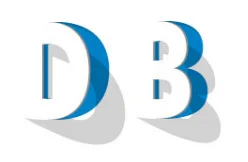Modernization of Local Search
Within a search context "local" refers to the ways in which we surface, present and interact with places or place entities. It’s also the largest search vertical…..taking up around 30% of all searches (meaning 1 out of 3 searches will encounter "local" UX patterns.) It’s a framework that supports 850 million daily queries and it is everything from discovering a restaurant to finding a gas station to get you there. The work done updating placesheet was a part of Modernization – a cross-functional project to support the next generation of Google products. More specifically we strove to; improve the discovery of critical information, emphasize relevant actions more prominently, freshen the look to feel more contemporary and make the content feel more dynamic and alive.
____________________
My Role
While on the Local Search UX team I worked closely with UX leads, researchers and 5+ designers on modernizing placesheet from both a feature & framework perspective, making data more accessible, organized, dynamic and contextual. Our goal was to craft scalable patterns that could gracefully extend across 30+ verticals making place information accessible, organized, dynamic and contextual. We were tasked with updating not only the place framework, defining a scalable UI framework that supports about 250M distinct places, but also designing new features to enhance and freshen the place ecosystem. Responsibilities included wiring & prototyping for rapid iteration and research, concept ideation for product strategy and innovation, design polish and delivery of assets, and also working closely with engineers on refinement for feature launches.
The Full User/Place Lifecycle
Approaching the framework we considered the entire user/place relationship through all stages of the journey lifecycle:
EXPLORING - Ensuring that users have the right tools and power to hone in on the perfect place.
DECIDING - Providing users with accessible rich content (photos, articles, reviews) to help them make informed choices.
GOING - Whether it is the address, business or hours we help users determine how and when to get there
ARRIVE - Offering key at-a-place content such as new menu items, wifi and not be missed place features.
REFLECT - Making it easy for users to reflect and share their experiences at a place
Process & Methodology
We designed and stress-tested an arsenal of components to be used in the place framework. This process included extending these patterns to partner teams to insure they could scale for all use cases. It was an exercise in both visual design and information architecture, arriving a scalable solutions that were able to flex for a number of needs. We then served as chaperones for placesheet across 50+ modules and 30+ teams.
Exploration & Iteration
Updates
Image Tab IxD Exploration
Expansion Affordances Exploration
One Framework, Many Verticals
About Tab
A large part of a user exploring place-content comes down to a place’s detailed offerings. However the existing UI for scalable attributes presented a few existing issues: a somewhat dated /cluttered UI (pos/neg icons), on page real estate - tabular UI makes list quite long and somewhat overwhelming, a desire to bring closer to our Mod track. I went ahead and updated the typographic treatment to improve scannability, cleaned up the UI, removing pos/neg icon clutter.
We validated that these were improvements by user testing the group. Key findings from the Endor survey (100-500 participants) showed that; in-line is more readable than tabular, using word “not” better than icon for comprehension.










